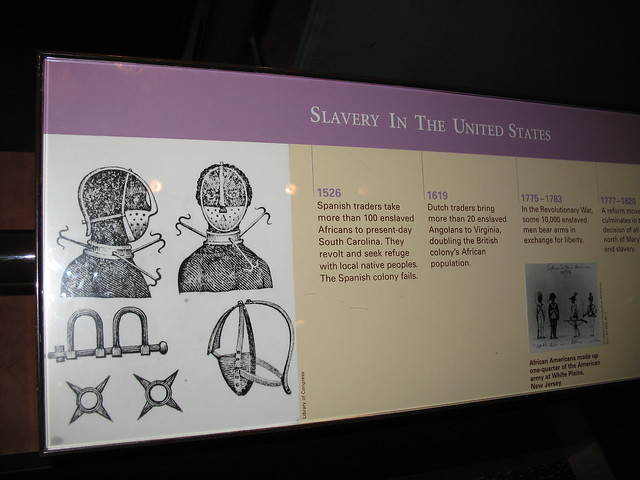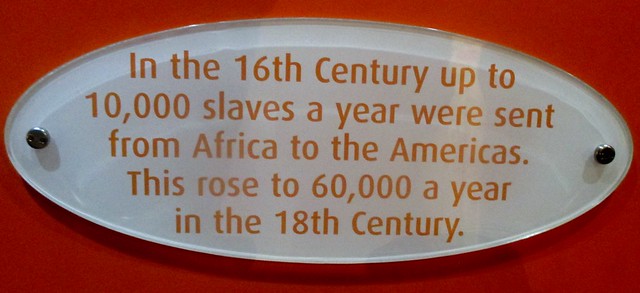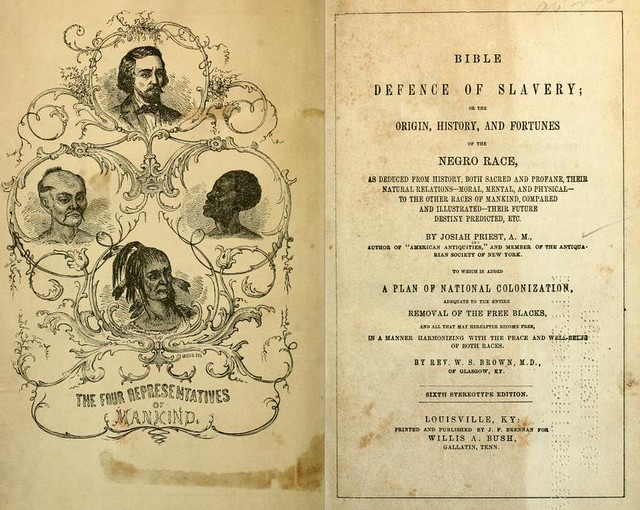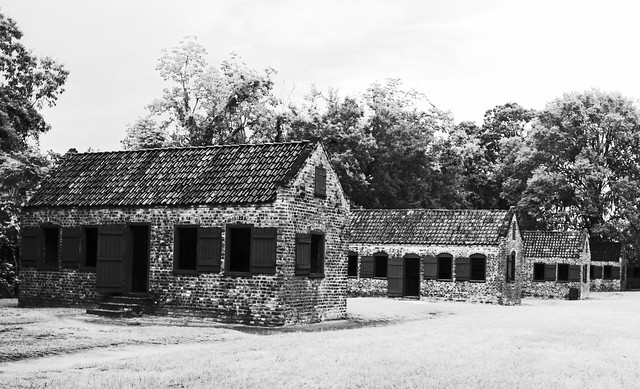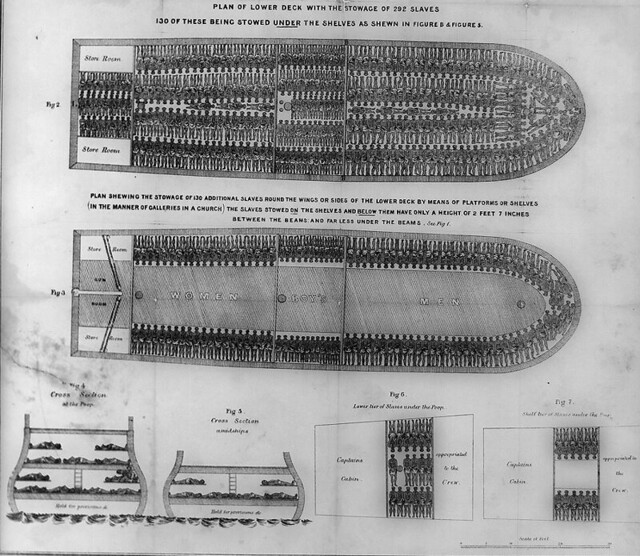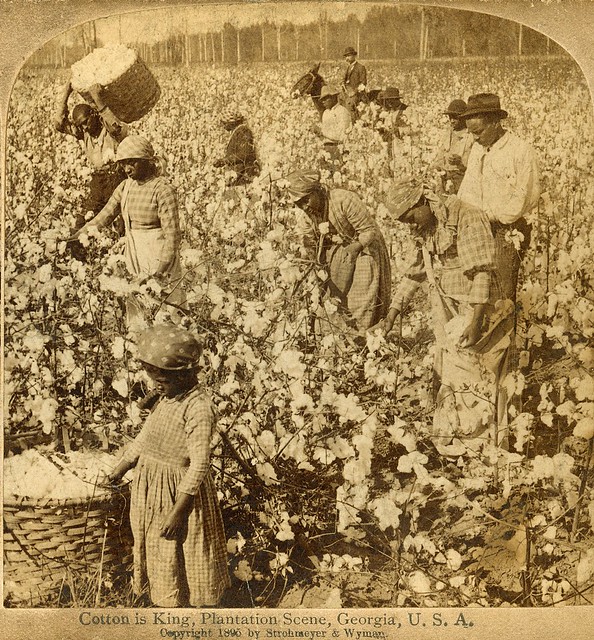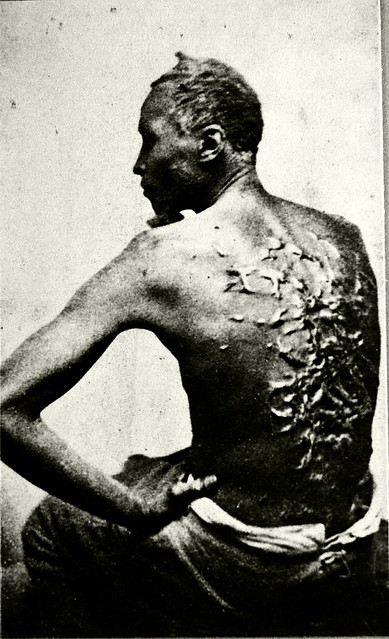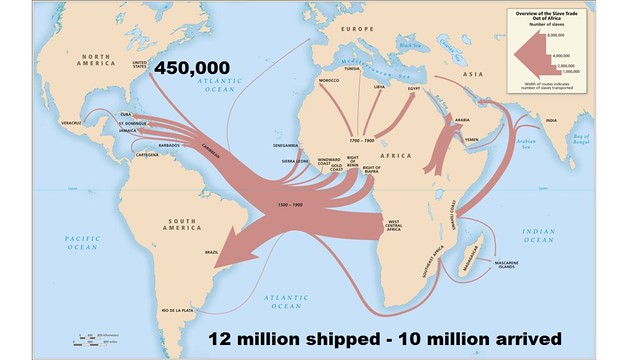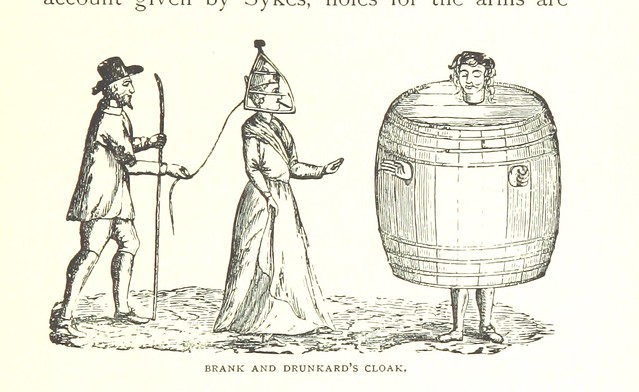Topics > Society > Human Rights > Slavery and the Abolitionist Movement
Slavery and the Abolitionist Movement
Anti slavery campaigners (in the context of Northern England). A work in progress. Feel free to add resources / add events to the timeline.
Some Key dates
To provide context below are some key dates relating to slavery and it's abolition - with a very limited focus on the UK and the British abolitioist movement. For a more comprehensive timeline covering many more countries see Wikipedia: Timeline of abolition of slavery and serfdom.
| Year | Event | Summary |
| 1691 | The 20 | The arrival of the first enslaved Africans in the British colony of Virginia in North America. The White Lion (ship) transported "twenty and odd" Africans who had been captured in joint African-Portuguese raids against the Kingdom of Ndongo (in modern-day Angola). |
| 1807 | Act for the Abolition of the Slave Trade (UK) |
An Act of Pariament which prohibited the slave trade in the British Empire. Although it didn't lead to the freeing of existing slaves it did end the trading of slaves in the British Empire and was influential in other nations abolishing slavery. |
| 1833 | Slavery Abolition Act 1833 (UK) |
An Act of Pariament which made the purchase or ownership of slaves illegal in much of the British Empire. Led to the freeing of slaves in the British Empire |
| 1837 | Slave Compensation Act (UK) |
No reparations were paid to former slaves, nor any appology. £20m (£300bn in today's value) was paid in compensation to slave owners for the loss of what had, until then, been considered their "property". The government's debt for borrowing to pay for this wasn't paid off until 2015. |
| 1838 | Freeing of slaves in British colonies | All slaves in British colonies become free after a period of forced apprenticeship, following the Slavery Abolition Act 1833. |
| 1840 | World Anti-Slavery Convention | Held in London |
| 1865 | Thirteenth Amendment to the United States Constitution | Slavery abolished in the USA, affects 40,000 remaining slaves (slavery had been abolished in most states at different dates prior to this). |
Abolitionists in North East England
1792 February 8: A petition to parliament was agreed on by the inhabitants of Newcastle and Gateshead, for the abolition of the slave trade. The whole kingdom appeared at this time to be interested in the degraded state of the poor blacks. Newcastle, in particular has ever been foremost in craving parliament to exert its powers, and do away with that traffic in human flesh.
Extert from: John Sykes Local Records: Historical register of remarkable events, which have occurred in Northumberland and Durham, Newcastle upon Tyne, and Berwick upon Tweed, 1833

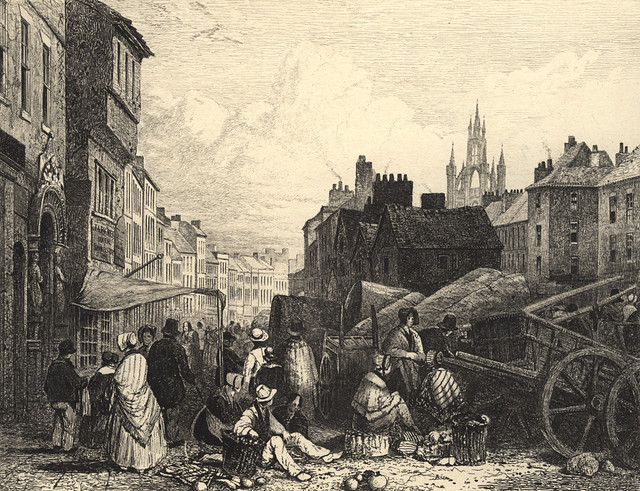
1792 Olaudah Equiano, a former slave and anti-slave trade activist stayed Newcastle in 1792 whilst touring to promote his autobiography 'The Interesting Narrative of the Life of Olaudah Equiano' around the country. The book told of the horrors of slavery and his own experience of being enslaved as a child in what is now Nigeria and transported to work in the Caribean. For a time based himself in a shop in the Bigg Market. Whilst at Newcastle he recorded his tour of St. Anthony’s Colliery, going 90 fathoms below, under the river Tyne, some hundreds of yards on Durham side.
1830 Numerous have been the petitions from this town on that subject, but the meeting which took place on the 11th of August 1830, was of a peculiarly interesting nature. It was held in Brunswick place chapel, which was crowded to excess, T.W. Beaumont esq, MP for Northumberland was in the chair, John Hodgson esq, MP for Newcastle, Mr Brougham (now Lord Brougham and Vaux lord high chancellor of England) and several other gentlemen made most eloquent speeches, after which a powerful petition for the abolition of slavery was agreed to. The Ladies Anti slavery Association of Newcastle, the same year petitioned the queen (Adelaide) to exert her influence in its abolition, which was very graciously received by her majesty.
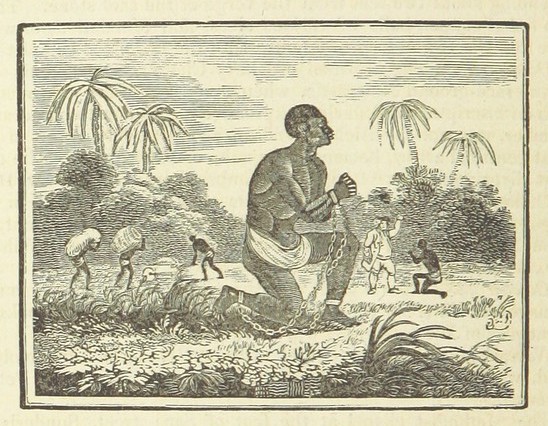
Extert from: John Sykes Local Records: Historical register of remarkable events, which have occurred in Northumberland and Durham, Newcastle upon Tyne, and Berwick upon Tweed, 1833
Exert from: T Fordyce, J. Sykes. Local records; or, Historical register of remarkable events which have occurred in Northumberland and Durham, Newcastle-upon-Tyne, and Berwick-upon-Tweed..., 1867.
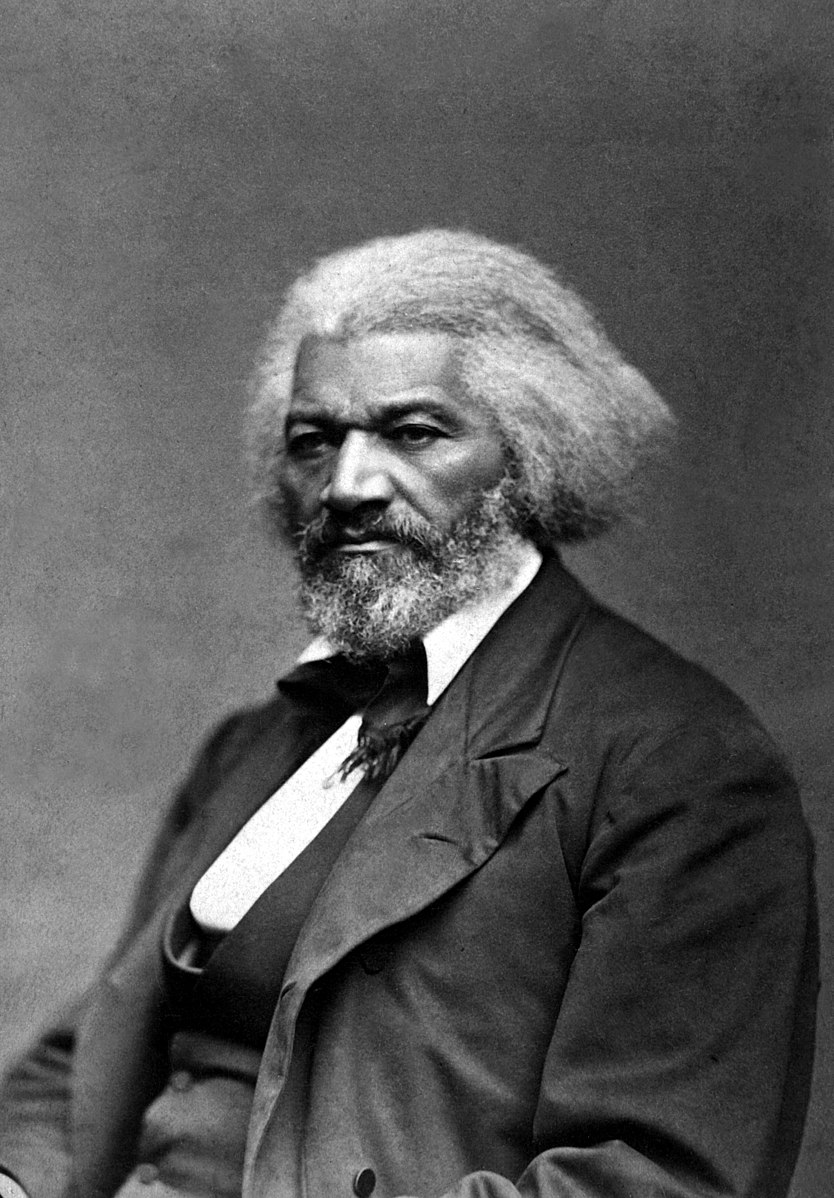
Co-Curate Page
Frederick Douglass (1818 - 1895)
- Frederick Douglass was a former plantation slave from Maryland in the USA, who went on to became a national leader of the Abolitionist movement. From 1846 Douglass spent two years …

Co-Curate Page
Elizabeth Barrett Browning (1806-1861)
- Overview About Elizabeth Barrett Browning Elizabeth Moulton-Barrett was born in 1806 at Coxhoe Hall in County Durham. She became one of the most renowned poets of the Victorian era who …
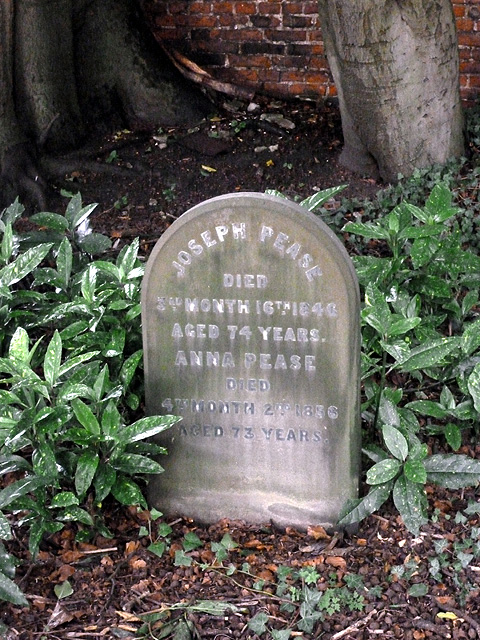
Co-Curate Page
Joseph Pease (1772–1846)
- Overview About Joseph Pease Reformer and Abolitionist. Not to be confused with his nephew of the same name: Joseph Pease (1799-1872). Joseph Pease (1772–1846) was an English Quaker activist. Among …

Co-Curate Page
James Losh (1763 - 1833)
- Overview About James Losh James Losh (1763–1833) was an English lawyer, reformer and Unitarian in Newcastle upon Tyne. In politics, he was a significant contact in the North East …

from Flickr (flickr)
Image taken from page 388 of '[Local records; or historical register of remarkable events which have occurred exclusively in the counties of Durham and Northumberland, town and county of Newcastle upon Tyne, and Berwick upon Tweed; with an obituary of per
Pinned by Simon Cotterill

Co-Curate Page
Brunswick Methodist Chapel, Newcastle
- Overview Map Street View Brunswick Methodist Chapel is located on Brunswick Place in Newcastle. The chapel was built in 1820. It was a frequent venue for meetings in the campaign for the …

from https://commons.wikimedia.org…
Am I not a Man and a Brother.
- "emblem used during the campaign to abolish slavery. The image is from a book from 1788, so there can be no effective copyright." Public Domain image c/o Wikimedia Commons.
Added by
Simon Cotterill

from http://collectionsprojects.or…
Remembering Slavery Slave trade, slavery and abolition: the north east of England connections
- By John Charlton (2007) ".....It is two hundred years since
Parliament ended British involvement
in the slave trade. As part of the national
commemoration of this important
moment in history, …
Added by
Simon Cotterill

from https://online.liverpoolunive…
‘THERE’S DEATH IN THE POT!’* THE BRITISH FREE PRODUCE MOVEMENT AND THE RELIGIOUS SOCIETY OF FRIENDS, WITH PARTICULAR REFERENCE TO THE NORTH-EAST OF ENGLAND
- O’Donnell A.E., Quaker Studies (2009) [184-204]. Abstract: Ethical consumerism was one of the strategies used during the protracted struggle against slavery
and was especially popular with Friends. From simple abstention …
Added by
Simon Cotterill
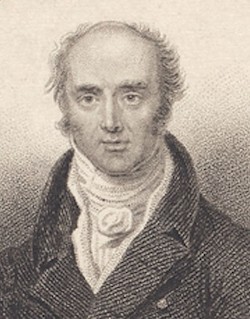
Co-Curate Page
Charles, 2nd Earl Grey (1764-1845)
- Overview About Charles Grey Charles Grey, 2nd Earl Grey was descended from a long-established Northumbrian family seated at Howick Hall. Aged just 22 Grey was elected to Parliament for the …

Co-Curate Page
Frederick Douglass Centre
- Overview Map Street View The Frederick Douglass Centre at Newcastle Helix was officially opened by Kenneth B Morris Jr., the great-great-great grandson of anti-slavery campaigner, Frederick Douglass. The opening ceremony …

Co-Curate Page
Charles Thorp (1783 - 1862)
- Overview About Charles Thorpe Charles Thorp, (13 October 1783 – 10 October 1862) was an English churchman, rector of the parish of Ryton and, later, Archdeacon of Durham and …

Co-Curate Page
Olaudah Equiano (c.1745 - 1797)
- Olaudah Equiano was a former slave who became an important activist in the anti-slave trade movement in the 1780s. As a child he was enslaved and taken from Nigeria to …
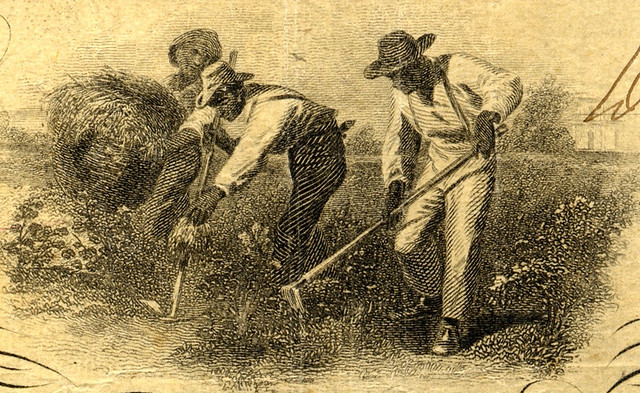
from Flickr (flickr)
13. institution_of_slavery_Confederate_100_Dollar_Note_with_slaves
Pinned by Simon Cotterill
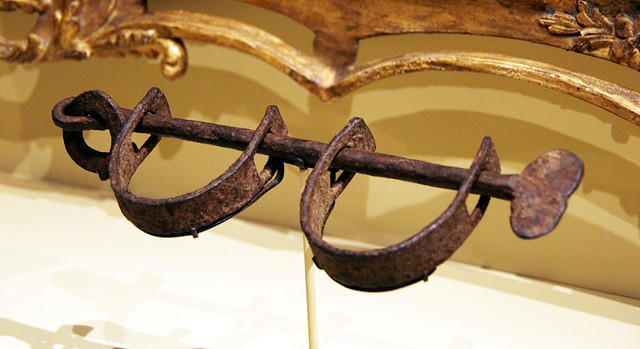
from Flickr (flickr)
Slave manacles used at Monticello - Smithsonian Museum of American History - 2012-05-15
Pinned by Simon Cotterill
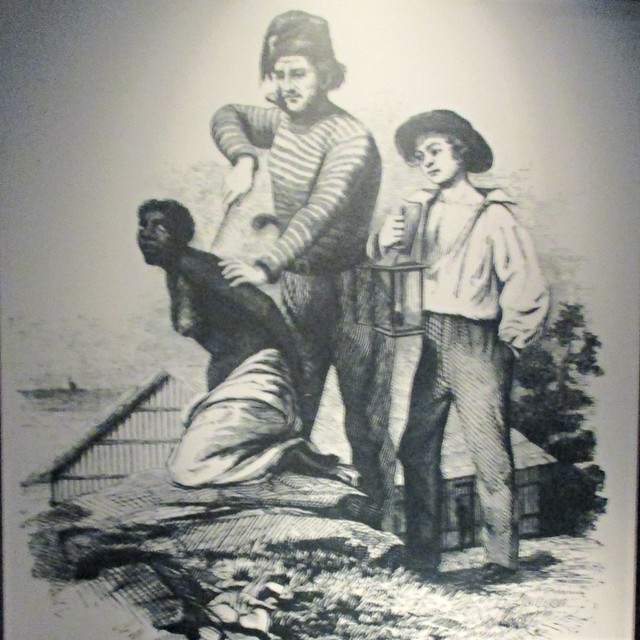
from Flickr (flickr)
International Slavery Museum exhibit: ‘Branding a Negress’ engraving by Whitney Jocelyn Annin (b&w photo) by American School (19th century).
Pinned by Simon Cotterill
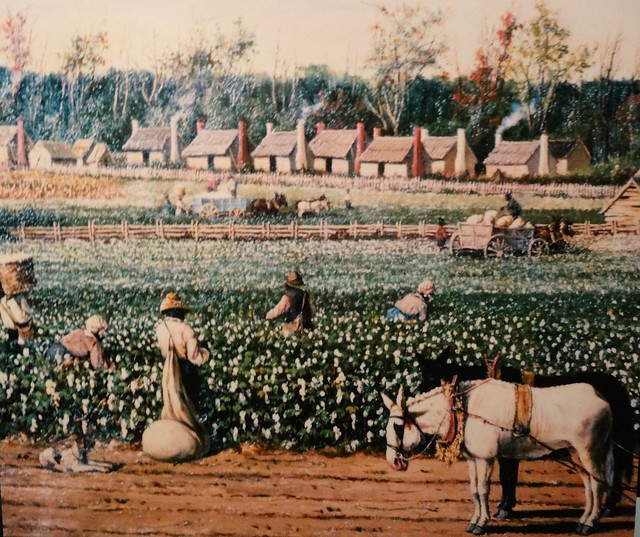
from Flickr (flickr)
Coloured lithograph of slaves picking cotton. Fort Sumter Museum Charleston .
Pinned by Simon Cotterill


Co-Curate Page
Frederick Douglass (1818 - 1895)
- Frederick Douglass was a former plantation slave from Maryland in the USA, who went on to became a national leader of the Abolitionist movement. From 1846 Douglass spent two years …

Co-Curate Page
Elizabeth Barrett Browning (1806-1861)
- Overview About Elizabeth Barrett Browning Elizabeth Moulton-Barrett was born in 1806 at Coxhoe Hall in County Durham. She became one of the most renowned poets of the Victorian era who …

Co-Curate Page
Joseph Pease (1772–1846)
- Overview About Joseph Pease Reformer and Abolitionist. Not to be confused with his nephew of the same name: Joseph Pease (1799-1872). Joseph Pease (1772–1846) was an English Quaker activist. Among …

Co-Curate Page
James Losh (1763 - 1833)
- Overview About James Losh James Losh (1763–1833) was an English lawyer, reformer and Unitarian in Newcastle upon Tyne. In politics, he was a significant contact in the North East …

from Flickr (flickr)
Image taken from page 388 of '[Local records; or historical register of remarkable events which have occurred exclusively in the counties of Durham and Northumberland, town and county of Newcastle upon Tyne, and Berwick upon Tweed; with an obituary of per
Pinned by Simon Cotterill

Co-Curate Page
Brunswick Methodist Chapel, Newcastle
- Overview Map Street View Brunswick Methodist Chapel is located on Brunswick Place in Newcastle. The chapel was built in 1820. It was a frequent venue for meetings in the campaign for the …

from https://commons.wikimedia.org…
Am I not a Man and a Brother.
- "emblem used during the campaign to abolish slavery. The image is from a book from 1788, so there can be no effective copyright." Public Domain image c/o Wikimedia Commons.
Added by
Simon Cotterill

from http://collectionsprojects.or…
Remembering Slavery Slave trade, slavery and abolition: the north east of England connections
- By John Charlton (2007) ".....It is two hundred years since
Parliament ended British involvement
in the slave trade. As part of the national
commemoration of this important
moment in history, …
Added by
Simon Cotterill

from https://online.liverpoolunive…
‘THERE’S DEATH IN THE POT!’* THE BRITISH FREE PRODUCE MOVEMENT AND THE RELIGIOUS SOCIETY OF FRIENDS, WITH PARTICULAR REFERENCE TO THE NORTH-EAST OF ENGLAND
- O’Donnell A.E., Quaker Studies (2009) [184-204]. Abstract: Ethical consumerism was one of the strategies used during the protracted struggle against slavery
and was especially popular with Friends. From simple abstention …
Added by
Simon Cotterill

Co-Curate Page
Charles, 2nd Earl Grey (1764-1845)
- Overview About Charles Grey Charles Grey, 2nd Earl Grey was descended from a long-established Northumbrian family seated at Howick Hall. Aged just 22 Grey was elected to Parliament for the …

Co-Curate Page
Frederick Douglass Centre
- Overview Map Street View The Frederick Douglass Centre at Newcastle Helix was officially opened by Kenneth B Morris Jr., the great-great-great grandson of anti-slavery campaigner, Frederick Douglass. The opening ceremony …

Co-Curate Page
Charles Thorp (1783 - 1862)
- Overview About Charles Thorpe Charles Thorp, (13 October 1783 – 10 October 1862) was an English churchman, rector of the parish of Ryton and, later, Archdeacon of Durham and …

Co-Curate Page
Olaudah Equiano (c.1745 - 1797)
- Olaudah Equiano was a former slave who became an important activist in the anti-slave trade movement in the 1780s. As a child he was enslaved and taken from Nigeria to …

from Flickr (flickr)
13. institution_of_slavery_Confederate_100_Dollar_Note_with_slaves
Pinned by Simon Cotterill

from Flickr (flickr)
Slave manacles used at Monticello - Smithsonian Museum of American History - 2012-05-15
Pinned by Simon Cotterill

from Flickr (flickr)
International Slavery Museum exhibit: ‘Branding a Negress’ engraving by Whitney Jocelyn Annin (b&w photo) by American School (19th century).
Pinned by Simon Cotterill

from Flickr (flickr)
Coloured lithograph of slaves picking cotton. Fort Sumter Museum Charleston .
Pinned by Simon Cotterill
